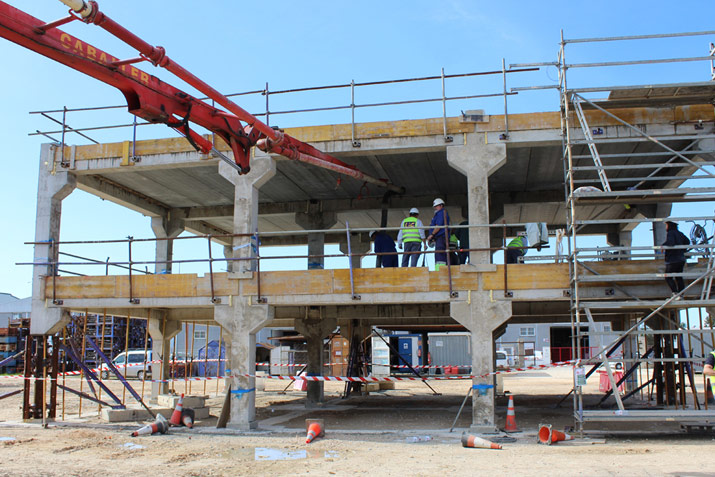

Researchers build full-scale prefabricated building to test for faults.
A team of Spanish researchers has built the first full-scale prefabricated building (test) to analyse potential faults in its structure caused by extreme events, such as natural disasters.
The infrastructure is part of the Prebust project, developed by a team from the Polytechnic University of Valencia (UPV). The team presents the results of some tests “pioneering around the world to improve the safety of buildings built with prefabricated structures.”
According to their research, buildings are increasingly exposed to the devastating consequences of extreme events caused by climate change, terrorist threats, ageing, or inadequate maintenance.
The research team from the Icitech Institute of the Polytechnic University of Valencia is carrying out the Prebust project, which has funding from the Ministry of Science and Innovation and the collaboration of the Valencian company Levantina. Engineering and Construction-LIC. “Our goal is to minimize the risks of progressive collapse,” says José M. Adam, a researcher at Icitech, a professor on the University Master’s Degree in Concrete Engineering (MUIH).
To do this, the UPV team built a full-scale prefabricated building, and simulated different extreme situations.
“Many prefabricated structures have been made in the field of research. But this is the first that is done worldwide for this type of test. The research is pioneering throughout the world, since in the field of progressive collapse work is usually done with scale specimens and in the laboratory. Here we go on a real scale, and with real failure situations”, adds Pedro Calderón, researcher at Icitech and professor at the MUIH.
The prefabricated building has been fitted with sensors, specifically: strain gauges to monitor deformation within the concrete; and displacement sensors and accelerometers, both electrical and fibre optic.
In addition, different cameras, both conventional and high-speed, have also been used to evaluate and visualise the response of the building. “The results obtained in the latest tests show that, with ‘low cost’ designs, prefabricated structures can be just as safe as the rest, which allows taking advantage of their advantages of sustainability, economy and quality, by adding greater safety”, said Adam.
CLICK HERE to return to the home page for more articles.